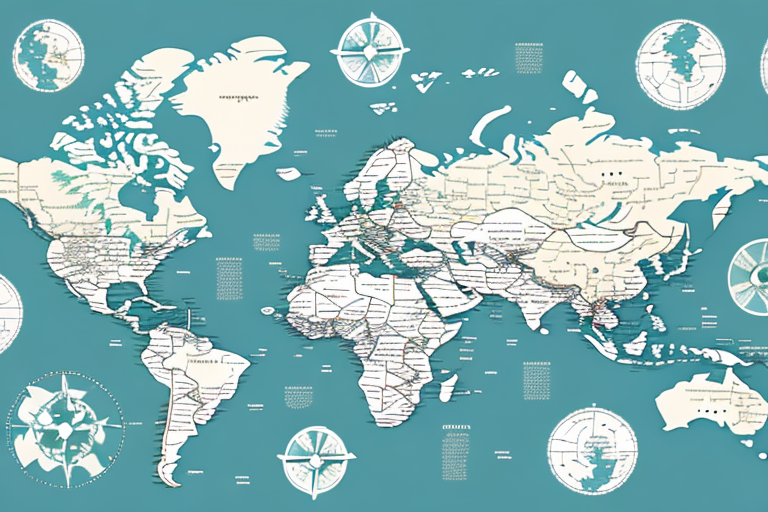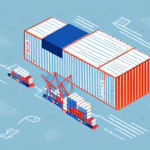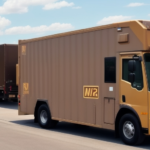Understanding UPS Foreign Shipping Rates
When shipping items overseas, understanding the differences in pricing and available services is crucial. UPS, one of the world's largest package delivery companies, offers a variety of international shipping options tailored to meet diverse needs. In this article, we will explore everything you need to know about UPS foreign shipping rates, including factors influencing costs, how to calculate expenses, and tips for reducing shipping fees.
Why International Shipping Rates Differ from Domestic Rates
International shipping rates differ from domestic rates for several reasons:
- Logistics and Resources: Shipping internationally requires navigating complex customs procedures, handling different currencies, and ensuring compliance with international regulations and laws.
- Taxes and Duties: Different countries impose varying taxes and customs duties, which can significantly affect shipping costs.
- Distance: The longer the distance between the origin and destination countries, the higher the shipping costs due to increased fuel and resource requirements.
- Mode of Transportation: Air shipping is generally faster but more expensive than sea shipping, which is more cost-effective for larger or heavier shipments.
These factors collectively contribute to the complexity and variability of international shipping rates.
Factors that Affect UPS Foreign Shipping Rates
Several factors influence UPS foreign shipping rates, including:
- Weight and Dimensions: Larger and heavier packages incur higher shipping costs.
- Destination Country: Shipping to remote or less accessible countries can be more expensive due to limited transportation options.
- Shipping Speed: Faster shipping options like UPS Express are pricier compared to standard or economy services.
- Declared Value: Higher-value items may require additional insurance, increasing the overall cost.
- Service Type: Different UPS services, such as UPS Worldwide Express or UPS Worldwide Saver, offer varying levels of speed and cost.
Understanding these factors is essential for accurately estimating and managing your international shipping expenses.
How to Calculate Your UPS International Shipping Costs
Accurately calculating UPS international shipping costs involves considering multiple variables. Here’s how you can do it:
- Use the UPS Shipping Calculator: Visit the UPS online shipping calculator to get an estimate by entering package details such as weight, dimensions, origin, and destination.
- Provide Accurate Information: Ensure that the weight and dimensions of your package are precise to avoid discrepancies in the estimate.
- Select the Appropriate Service: Choose between services like UPS Express, UPS Saver, or UPS Standard based on your delivery timeline and budget.
- Consider Additional Services: Add-ons like insurance, signature confirmation, or customs brokerage can affect the total cost.
For a more customized quote, you can also consult with a UPS representative who can provide guidance tailored to your specific shipping needs.
Understanding the Different Types of UPS Shipping Services for Foreign Deliveries
UPS offers a range of shipping services for international deliveries, each catering to different needs:
- UPS Worldwide Express: Provides fast delivery to over 220 countries and territories, typically within 1-3 business days.
- UPS Worldwide Saver: Guarantees delivery by the end of the business day, three to five days faster than standard services.
- UPS Worldwide Expedited: Offers cost-effective delivery to major destinations within 2-5 business days.
- UPS Standard: Suitable for less urgent shipments, providing reliable ground delivery to Canada and Mexico.
Choosing the right service depends on factors like delivery speed, budget, and the nature of the items being shipped. Additionally, UPS offers customs clearance services to streamline the process of getting your package through customs, ensuring a smoother delivery experience.
How to Save Money on UPS International Shipping Rates
International shipping can be costly, but there are several strategies to reduce expenses:
- Bundle Shipments: Combine multiple items into a single package to take advantage of bulk shipping rates.
- Choose Slower Shipping Options: Opting for economy or standard services instead of express can lead to significant savings.
- Optimize Packaging: Use lightweight and compact packaging materials to minimize weight and dimensions, reducing shipping costs.
- Leverage Discounts: UPS offers discounts for businesses, non-profits, and frequent shippers. Check the UPS discount programs to see if you qualify.
- Use a Shipping Calculator: Compare different shipping options and rates using UPS’s shipping calculator to find the most cost-effective solution.
Implementing these tips can help you manage and reduce your international shipping expenses effectively.
Tips for Packaging Your Items to Reduce UPS Shipping Costs
Proper packaging is essential for minimizing shipping costs and ensuring the safety of your items:
- Use Sturdy Materials: Choose strong boxes, bubble wrap, and packing peanuts to protect your items during transit.
- Minimize Package Size: Use the smallest possible box or envelope to reduce dimensional weight charges.
- Lightweight Packaging: Opt for lightweight packaging materials like air pillows or foam inserts to keep the overall weight down.
- Avoid Excess Packaging: Remove any unnecessary materials to further reduce weight and size.
- Proper Labeling: Clearly label your packages with the recipient’s full address and include any required customs documentation to prevent delays or additional fees.
By following these packaging tips, you can decrease the likelihood of incurring extra charges and ensure your items arrive safely at their destination.
What You Need to Know About Customs Duties and Taxes for International Shipments
Customs duties and taxes play a significant role in the total cost of international shipments. Here’s what you need to know:
- Import Duties and Taxes: These fees are based on the value and type of goods being shipped and vary by destination country. Always research the specific regulations of the destination country before shipping.
- Customs Documentation: Accurate and complete documentation, including commercial invoices and declarations, is crucial to avoid delays and additional charges.
- Additional Fees: Be aware of potential brokerage, handling, and storage fees that may apply depending on the shipment and destination.
To mitigate unexpected costs, consider using UPS’s customs brokerage services, which can help navigate the complexities of international shipping regulations.
How to Navigate the UPS Shipping Process for Overseas Deliveries
Navigating the UPS shipping process for international deliveries involves several key steps:
- Accurately Complete Shipping Documents: Ensure all required forms, such as commercial invoices and export declarations, are correctly filled out.
- Properly Label Your Package: Include the recipient’s complete address, a return address, and any necessary customs documentation.
- Select the Right Shipping Service: Choose a UPS service that aligns with your delivery timeline and budget.
- Communicate with the Recipient: Provide tracking information and expected delivery timelines to the recipient to keep them informed.
- Understand Customs Regulations: Research and comply with the destination country’s import regulations to avoid delays or additional fees.
Following these steps diligently can help ensure a smooth and efficient international shipping experience with UPS.
Common Mistakes to Avoid When Shipping Internationally with UPS
To ensure a successful international shipment with UPS, avoid these common mistakes:
- Incomplete Shipping Documents: Missing or incorrect information can lead to delays and additional costs.
- Poor Packaging: Inadequate packaging may result in damaged goods and increased liability.
- Incorrect Declaration of Value: Undervaluing items can lead to penalties and delays in customs clearance.
- Ignoring Customs Regulations: Failing to comply with destination country’s regulations can result in fines or confiscation of goods.
- Not Insuring Valuable Items: Skipping insurance for high-value items can result in significant losses if items are lost or damaged during transit.
By being aware of these potential pitfalls and taking proactive measures, you can avoid common shipping mistakes and ensure your packages arrive safely and on time.
Comparison of UPS Foreign Shipping Rates with Other Carriers
When selecting an international shipping carrier, it's important to compare UPS rates and services with those of other major carriers like FedEx and DHL. Here's a comparison to help you make an informed decision:
| Carrier | Service Options | Delivery Speed | Pricing | Additional Services |
|---|---|---|---|---|
| UPS | Worldwide Express, Worldwide Saver, Worldwide Expedited, Standard | 1-5 business days | Competitive, especially for heavy packages | Customs brokerage, insurance, tracking |
| FedEx | International Priority, International Economy | 1-6 business days | Generally higher for express services | Extensive tracking, insurance options |
| DHL | DHL Express Worldwide | 1-4 business days | Competitive for Europe and Asia | Strong international presence, customs expertise |
When comparing carriers, consider factors such as destination, package size and weight, delivery speed, and additional services. For instance, DHL may offer better rates and faster delivery in Europe and Asia, while UPS might be more cost-effective for heavier shipments in North America. Utilizing a shipping rate comparison tool can help you identify the best carrier for your specific needs.
Conclusion
UPS foreign shipping rates can be complex, but understanding the factors that influence them and following best practices for packaging and documentation can help reduce shipping costs and ensure successful deliveries. By taking the time to research customs regulations, accurately calculate shipping costs, and select the appropriate shipping service, you can navigate the international shipping process with confidence and efficiency.
For more detailed information and customized shipping solutions, visit ShipScience.






















